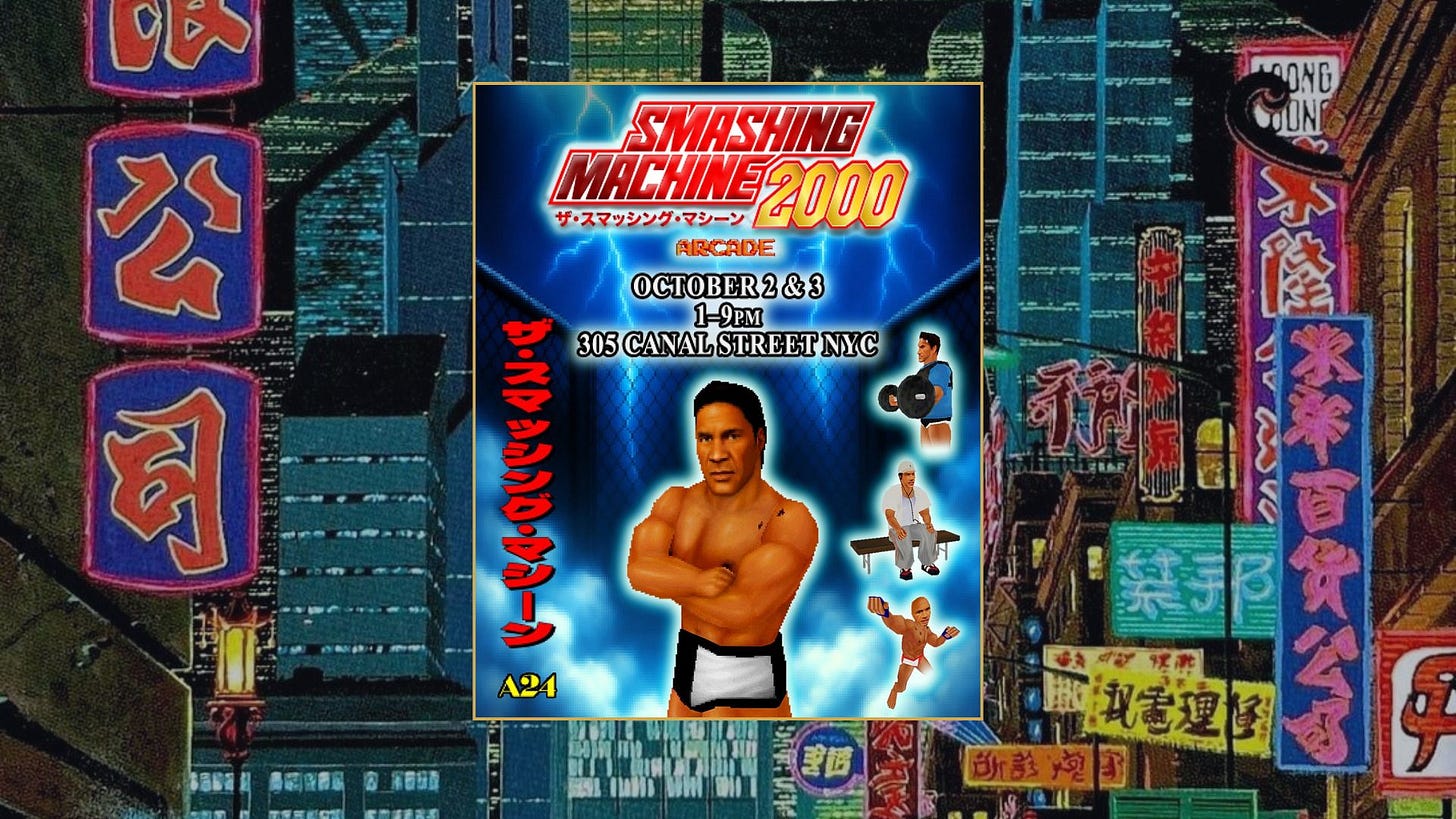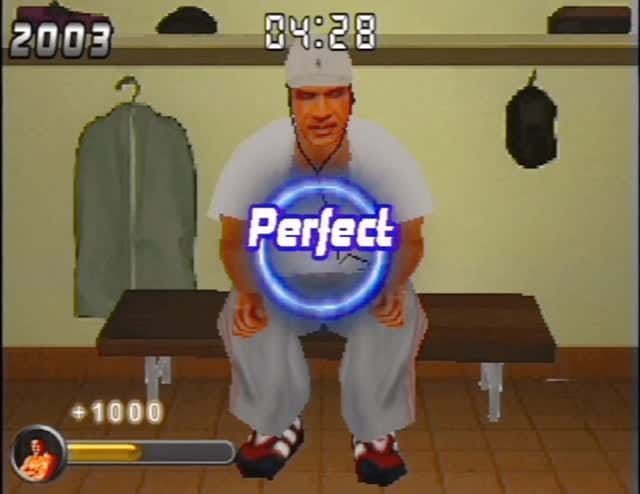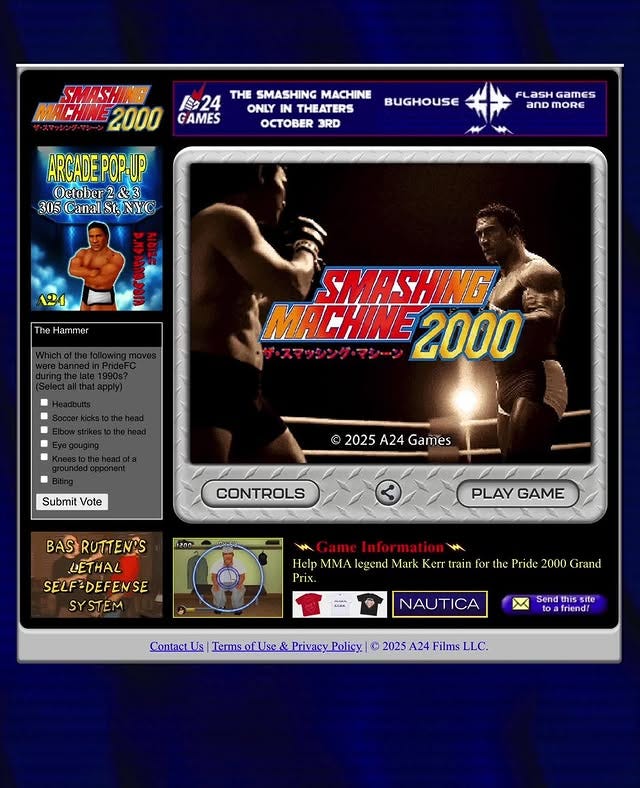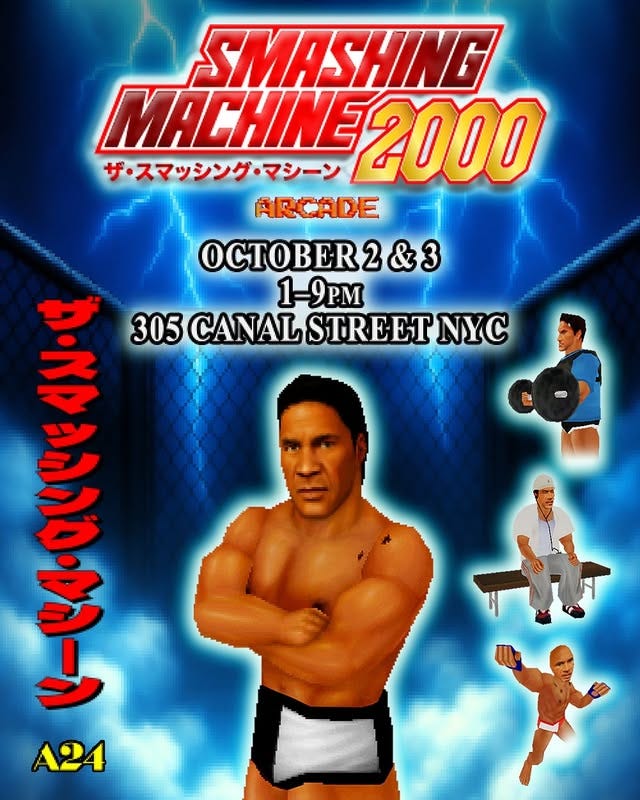A24: Builder Of Worlds, Smasher Of Games
An interview on The Smashing Machine 2000.
Rage quitting in video games is a poignant part of the culture. Controllers take flight, consoles meet their maker, screens go static. The pure drama of these episodes has become somewhat of a genre. And a popular genre at that. Streamers know it. Even Nike knows it.
If anyone can turn a left field genre into a cultural lane, it is A24. They did it in film. They are nosing into music. Now video games feel inevitable. We’ve heard that Elden Ring and Death Stranding are getting their own adaptation, but the spicier play is actually making games. Enter The Smashing Machine 2000, a game built to provoke pride, panic, and the kind of button mashing that makes a room go quiet for a second. It’s A24’s take on rage culture, ported to a flash game and arcade booth (on Canal St in NYC).
Arcade culture persists because it does one thing other gaming formats struggle to deliver: consequence you can feel. Buttons thunk. Time runs out. Someone behind you laughs while counting your last lives. Arcade cabinets force bodies into proximity. The Smashing Machine (Benny Safdie) is a film that focuses on the wrestler’s body, and the trials and tribulations it can endure. The Smashing Machine 2000 understands that gravity. It is not only a promo beat. It is an environment where performance, failure, and bravado can be delivered by a one button smash.
Drawn Distant spoke with Maria Vorbjova, Stefan Cohen and Blake Andrews - creators of The Smashing Machine 2000.
What concept was behind the game design for The Smashing Machine?
BLAKE: Training is a large part of The Smashing Machine’s plot. We thought it would be more fun to do something kind of out of left field, but still a representation of the themes of the movie. We also knew we would be focusing on a game both for mobile and a physical cabinet. I love arcade games with unique/iconic controllers, but making something that has to be on both platforms made me consider what could have an iconic feeling. The movie is called The Smashing Machine, which has a brutal and simple feeling, so just having one large button per player is both not too clever, but it also helps the game stand apart from things like Bishi Bashi or the Rhythm Heaven arcade game, which we are fans of.
MARIA: The visual direction is a medley of early internet flash games and late-90s/early-2000s console and arcade aesthetics inspired from the period and location of the movie. We leaned into a kind of intentional mismatch, so that it doesn’t strictly replicate any one platform but instead channels the vibe of that era. I was experimenting with that one-point-perspective faux 3D look. For Mark’s character, we were inspired by blocky low-poly wrestlers in titles like Virtual Pro Wrestling 2, and WWF No Mercy. And in terms of UI, we loved the playful, slightly odd graphics and palettes in games like No One Can Stop Mr. Domino! and Bishi Bashi.
Why did you fixate on this particular style of video game graphics?
STEF: Aside from all of us being massive fans of this art style, the film takes place in the 2000’s Japan so we’re trying to be as authentic to that and the vision Benny and A24 had for the aesthetic. We thought to ourselves, ‘what would this game really look and feel like if it was made by a Japanese game studio in 1999/2000?’
A24 excels at producing films that give a very specific feeling. Did you try and channel a certain feeling when making this game?
BLAKE: I like to think of games situationally, like where will people be playing it and how. While the game is on mobile and web, my intended experience is for the in person event, which is something I am used to. While the game is fun on the phone, I have noticed with some games, people perform while playing them. I’m just imagining fans of The Rock and Mark Kerr trying to hulk out and smash the huge button on the arcade cabinet. I made the game a smidge too hard, to encourage people to rage out. I want someone at the pop-up to completely lose their cool and break the cabinet in competition. Maybe if someone gets salty and loses, they punch the screen. Maybe someone will flip over and break the cabinet. One time, I brought a game to a playtest event at NYU and someone slammed on my keyboard and the computer shut off. I’m not encouraging any of this, I just hope it’s an emergent property of the game.
STEF: Our main goal was also really to try and transport players to the year and setting that the movie takes place in. So from the website design, to the soundtrack and sfx, to the game itself we tried to create an experience so accurate to playing web games in the year 2000 that it causes confusion in people. We want people to genuinely think this is an old game lost to time that has magically resurfaced.
MARIA: The movie is shot on VHS, 16mm, and 65mm. The 16mm has this beautifully grainy, textured quality while the 65mm has more precise, striking clarity. I think our game has a similar kind of juxtaposition - a low-res, low-poly game, designed primarily for modern screens, with VHS filtered cutscenes. For the textures I pulled directly from film environments, reworking backgrounds into the game with dithering and aliasing. I think the grit, pixels, all these analog artifacts are what gives it that emotionally immersive and atmospheric tone.
If you’re in New York on October 2nd or 3rd, check out The Smashing Machine 2000 alongside plenty of other Japanese arcade games at 305 Canal Street.





